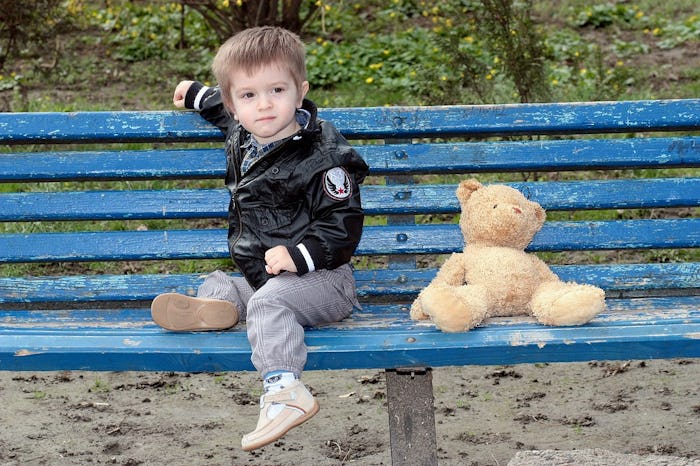From the moment they're born, your baby will do things you don't love. It's easy to have more patience with a cute bay who can't help it if they projectile vomit on your new dress. But what about that toddler who won't stop throwing mac-n- cheese across the kitchen no matter how many times you tell them not to? If you've been looking for effective ways to help your little one correct undesirable behavior, you may be questioning when you can start putting your toddler in time-out, so you can start setting some boundaries.
If you've decided you would like to try time-outs for your toddler, clinical child psychologist Edward R. Christophersen told Parenting magazine that you can implement time-outs with effective results when your child is just 18 months old. The key is to keep the messages age appropriate and stay consistent so your little one can start to grasp the concept of time-out. The most important thing is that your toddler view this time as an opportunity to gather her thoughts and move on with your guidance and redirection. Seeing time-out as a punishment will start to diminish its effectiveness.
When you feel your child is ready to learn some skills for behavior through time-out, try these seven strategies to find what works for you and your child.
1Pile On The "Time-In"
This technique is suggested by the parenting resource website Ask Dr. Sears, and encourages parents to spend lots of time encouraging the desirable behaviors of toddlers. This way, they will associate good feelings with this behavior, and when they have a time-out, away from the positive reinforcement, they will connect bad feelings to negative behaviors and be less likely to repeat those.
2Find The Perfect Setting
When it comes to time-out, it's all about location, location, location. You want to avoid areas that may seem fun, engaging, or interesting to your toddler, according to What To Expect. Search for a dull and boring location where your child to spend their time-out.
3Pretend To Ignore Them
The purpose of a time-out is for the toddler to feel like they're missing out on special time with mommy. As Parenting suggested, act like you're ignoring your child when they are in time-out, without appearing angry. This way, they see you have carried on with what you were doing and they have to miss out.
4Go There Right Away
Sometimes, putting a child in time-out can interrupt whatever task you're doing, but it's important to place your child in time-out immediately after the undesirable choice, according to Parents magazine. This is encouraged even if you are out in public. Just find a boring spot that works, and have them sit until time's up.
5Know The Limits
When implementing a time-out, it's important to know how long your child should sit in the designated spot. According to the American Pediatric Association, the sweet spot for time-out is one minute per year of age. But don't start that timer until your child is calm and in control.
6Explain Why
It's not always easy for toddlers to make the connection between their behaviors and the consequences. So as the Centers for Disease Control pointed out, remember to tell your toddler why they are in time-out. A brief explanation will do the trick and help your little on understand what happens when they make the wrong choice.
7Offer Some Calming Items
Part of time-out is to give your toddler a chance to catch their breath and calm down. To help make this transition easier, Mothering magazine suggested keeping a basket of comforting items in the time-out area, which will give your child a chance to snuggle with a blanket, hug a stuffed animal, and find something soothing to help them calm down.
